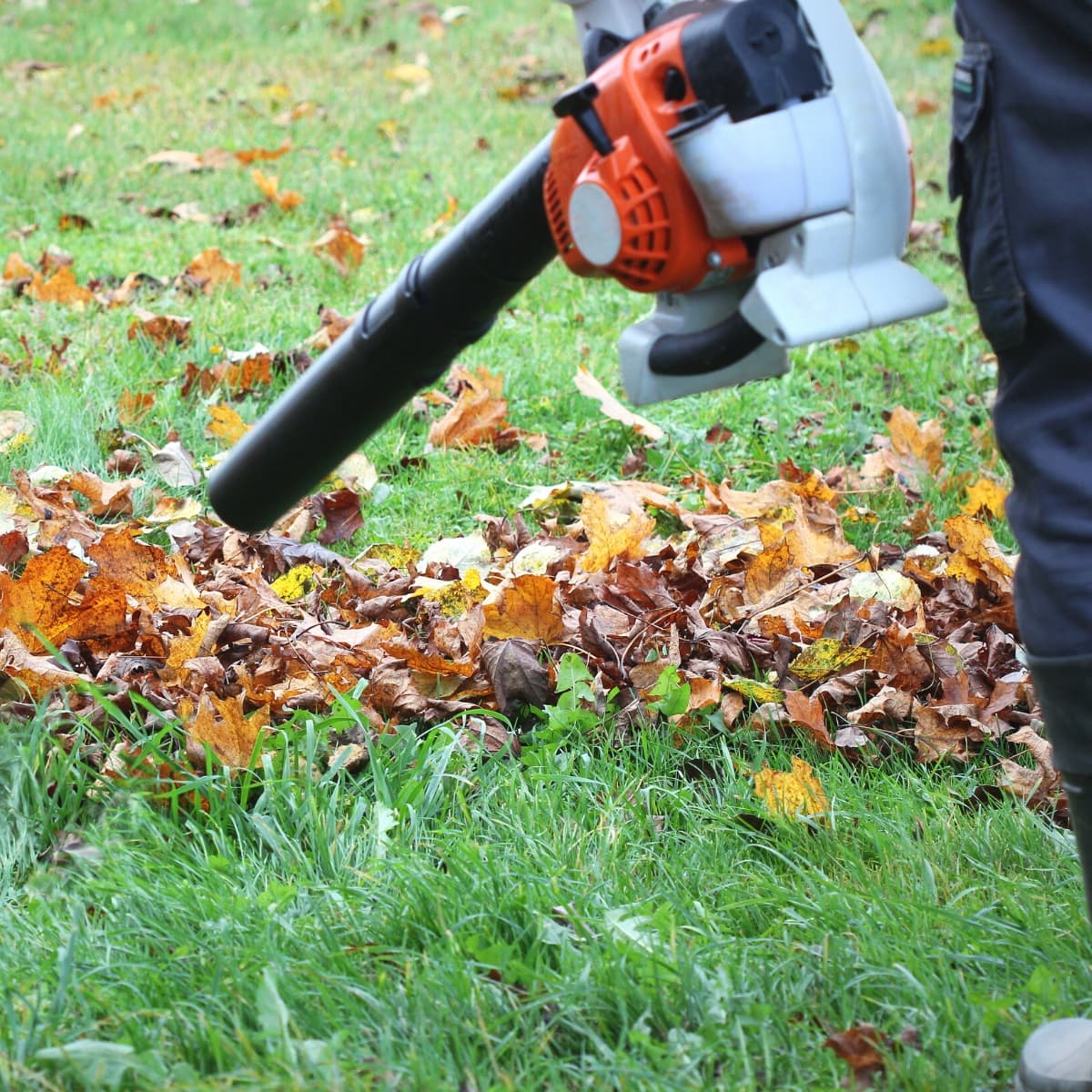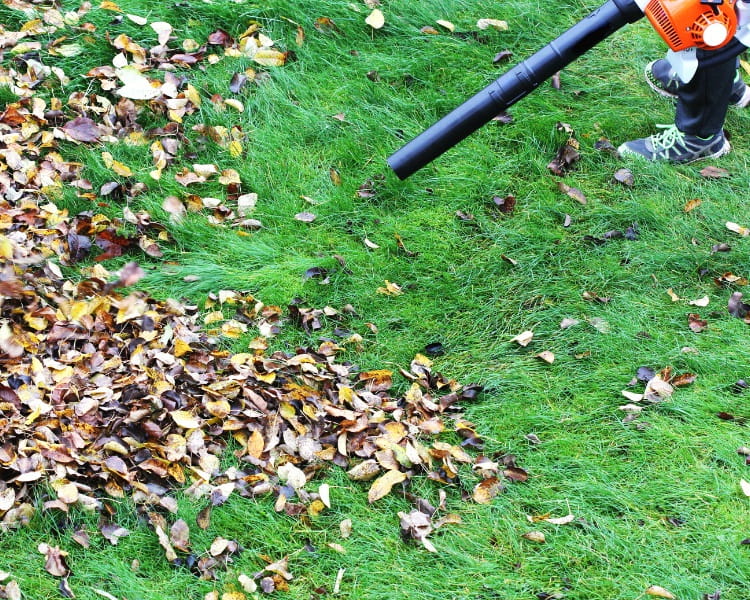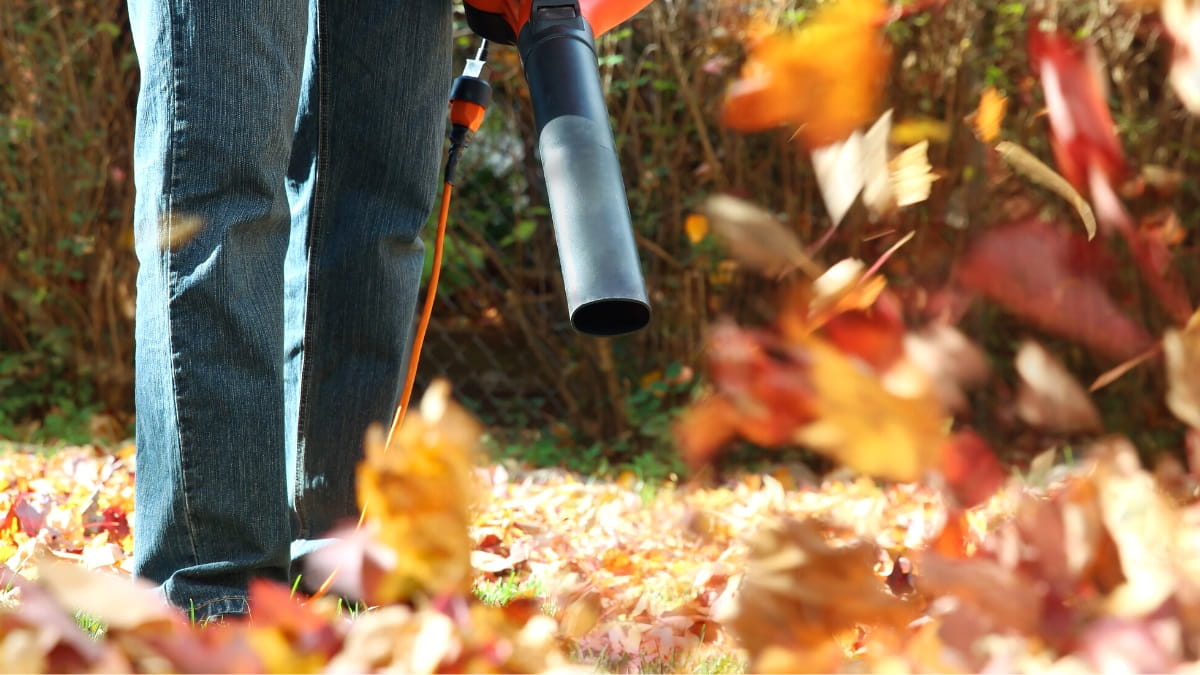Last updated: January 20, 2024
A guide to the power measurements CFM and MPH for leaf blowers and how important they are for your new leaf blower’s performance.
When looking for a new leaf blower to purchase, first you’re going to have to work out what type of leaf blower you want and need. Once you’ve got that sorted, you will need to look at how powerful you need that leaf blower to be.
The power of a blower is determined by the CFM and MPH measurements. In this article, we’re going to explain what these measurements are and how powerful your leaf blower needs to be to match your needs.
CFM Versus MPH
CFM and MPH are two measurements used by manufacturers to determine how powerful their leaf blowers are, so it’s essential to understand the concept behind the two measurements.
What Is CFM?
The acronym CFM stands for Cubic Feet per Minute.
This is a measurement of volume.
It measures how much air passes through the pipe and nozzle of a leaf blower each minute. It can give you an idea of how much material and how large of an area you can clear using that particular blower. The higher the CFM, the more air is pushed out, and the more material can be blown away.
What Is MPH?
The acronym MPH stands for Miles per Hour.
This is a measurement of velocity.
It measures how fast the air passes through the leaf blower pipe and nozzle. It can give you an idea of how quickly and how far a pile of leaves can be cleared. The higher the MPH, the faster air is pushed out, the more targeted force is being created, and the further material can be blown away.
Common CFM and MPH Values
Here are common CFM and MPH values per leaf blower type:
- Handheld:
300-600 CFM and 100-200 MPH - Backpack:
400-900 CFM and 150-250 MPH - Walk-behind:
1000-8000 CFM and 150-250 MPH
To summarize the two measurements in simple terms:
A high CFM enables the user to blow a larger pile of leaves at once, but not necessarily very far.
A high MPH enables the user to blow a smaller pile of leaves quicker, and also farther.
As you can imagine, the higher both measurements, the more powerful the leaf blower is considered to be.
A blower with midrange CFM and MPH ratings will work perfectly for most residential yard maintenance projects. Higher ratings are better for moving wet leaf build-up, gravel, small rocks, and dirt, or covering larger areas.
The key is to choose a leaf blower that has both a powerful enough motor to force a lot of air out at once and the right-sized pipe and nozzle to force that high volume of air out quickly.

What Impacts CFM and MPH?
What impacts CFM and MPH values when it comes to leaf blowers?
Let’s quickly examine the factors that may affect how these measurements work for your new leaf blower product.
1. Blower Type
The blower type, or rather, the type of motor, obviously impacts the performance of the blower in terms of pure power.
Generally speaking, a gas-powered leaf blower will have higher CFM and MPH values than an electric (corded or battery-powered) leaf blower, although this is certainly not set in stone. In fact, some modern electric blowers can easily compete with their gasoline-powered counterparts when it comes to power.
Also note that there can be significant differences between gas-powered blowers as well. For example, 2-cycle and 4-cycle motors will deliver different performance levels.
2. Pipe and Nozzle Design
Longer and smaller pipes typically lead to lower CFM and higher MPH values, whereas a wider pipe allows for more air to be released but with less speed.
In a similar fashion, the nozzle design also plays a role in this.
3. Impeller Design
The impeller in a leaf blower creates the airflow inside the motor and resembles a fan.
The speed, rotation, and length of the blades are all factors when it comes to the CFM and MPH ratings.

Conclusion
Realistically, you don’t need a leaf blower with the highest CFM and MPH ratings, just like you don’t need a car with the most powerful engine.
The best leaf blower for you is the one that best suits your needs. If you have a large yard to look after, you may want to focus on a higher CFM. If you have a smaller space to cover and want to get the job done quickly, it might be better to focus on the MPH rating.
But don’t just focus on power and performance. Also pay attention to the runtime of the battery, the quality of the motor, the length of the cord, extra features of the blower, the weight, and, of course, the price.

